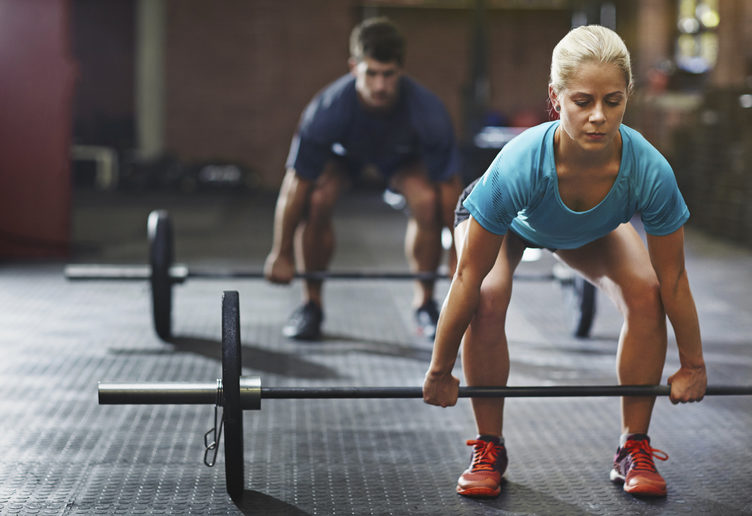It is generally accepted that runners benefit from resistance training.
Most studies show resistance training reduces injury risk and improves both biomechanics and running economy. This ultimately leads to better performance over time.

Resistance training covers a broad spectrum of activities from circuit classes to Olympic style weightlifting however. The latter is recommended by some running coaches to improve both power and speed. These include technical lifts such as the snatch and the clean and jerk.
So should runners be Olympic style weightlifting?
More specifically, should you?
Let me first ask you a couple of questions.
I’m presuming you want to be the best runner you can be whilst avoiding injury. Am I right?
Excellent.
And you want to use resistance training as a means to help you achieve this, correct?
Splendid.
Then Olympic weightlifting is not for you.
Here’s why.
Poor risk to benefit ratio
Firstly the risk to benefit ratio is skewed in the wrong direction. These lifts are highly technical and take time to learn. Throughout any learning process you will make mistakes. This is normal.
The problem with Olympic weightlifting is that these mistakes will involve a weight moving at speed. I know many relatively experienced lifters who have been injured using this style of training, let alone novices.
I’m not saying injury is inevitable. It’s just that the risk is greater when you add both speed and a high technical skill requirement to a resistance training exercise.
Speed also does an interesting thing to the challenge on the muscles involved. If you launch a weight with enough effort at the start of a movement, it requires very little muscular activity to keep it moving. That’s why highly skilled individuals in this sport make it look effortless.
Picture the amount of effort required to get a car moving when it has broken down. Once it’s actually moving, less effort is required to keep it going.
Now imagine trying to stop that car when it has built up some speed. That is the task you face when gravity has its way and the weight starts coming back towards you.
Huge peaks in force but a poor overall challenge
Essentially an exercise like the power clean for example will look like this. Huge peak in force, nothing, nothing, nothing, huge peak in force.
The fact that strength adaptations are very specific to the joint angles challenged, means you’ll get stronger in certain positions but not in others.
That large peak in force also has the potential to cause injury. Not only are you attempting to move a heavy weight, doing it as fast as possible requires you to generate a greater force than if you started slowly.
Likewise when you attempt to catch it at the top of the movement, the weight takes on a greater mass as it begins it’s descent towards the ground.
Any injury is essentially caused by forces that are too great for the tissues to tolerate. An activity that contains large peaks in force is therefore best avoided.
Especially when there is a safer, more effective way to achieve your goal.
So what type of resistance training should you be doing?
The best results come from keeping it simple. That means using fixed weight machines where possible.
Free weight exercises won’t give you better results and like with Olympic lifting, they come with an associated risk. Until you get skilled at a squat for example, you’ll be limited in how much weight you can use.
In this study for example motorised strength and power training produced superior results to both free weight training and Olympic style weight lifting. Interestingly the latter was found to be largely ineffective.
Studies that have investigated muscle contribution to running show the majority of the work is done by the ankle plantarflexors (calves) and quadriceps, 55% and 30% respectively.
You’ll therefore get the best outcomes by focusing primarily on the muscles that act on your ankles and knees, with some general work on your hips, trunk and upper body.
I recommend using slow repetition speeds because they have been shown to produce greater gains in strength and they mitigate the risks that fast repetitions pose. If you can’t stop the weight at any point during the repetition, the chances are you’re moving too fast.
Lastly don’t listen to the people that tell you in order to improve your running speed you need to lift fast. That is simply not true.
Do your speed work on the track and use your resistance training sessions to improve and maintain the function of your muscular system.
Mixing the two is a recipe for injury, the very thing you are seeking to avoid.